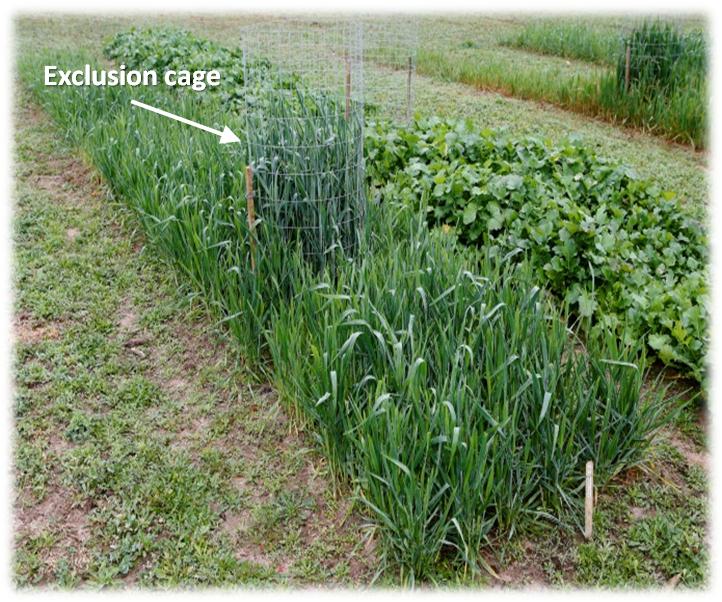
The use of cover crops is gaining popularity with conventional, sustainable, and organic growers. The number of research publications on this topic has sky-rocketed. There is a real opportunity for vegetable growers to benefit from cover crop techniques.
Cover crops are typically used to build soil fertility, while breaking pest cycles between cash crop rotations. For Florida vegetable growers, cover crops are often used during mid-winter and mid-summer. Cover crops are also used to minimize soil erosion until more permanent vegetation takes root. They can be planted as single varieties, or in blends of complementary plants.
All kinds of plants qualify as cover crops but there are roughly three groups for us to consider: 1) grasses with fibrous roots to improve soil structure, 2) legumes to fix nitrogen (green manure), and 3) brassicas to cycle plant nutrients and lessen soil compaction.
Grasses are noted for their massive fibrous root systems. Winter cover grasses include many of the small grains including wheat, oat, rye, and triticale as well as annual ryegrass.
Summer is more dependent upon millets and possibly sorghums. Although perennial species are not defined as cover crops, they are excellent soil builders when used in short rotations of two or more years with vegetables or other cash crops.
Many legume species will contribute slow-release, organic nitrogen to the succeeding crop, which greatly reduces fertilizer nitrogen costs. They can be tilled into the ground as green manure, providing anywhere from 30 to 200 pounds per acre of nitrogen over the following year, depending on the legume and its management.
Winter legumes to consider include crimson, red, arrow-leaf, ball, and berseem clovers, vetch, winter peas, and lupin. Summer legumes include soybeans, cowpeas, and sunn hemp.
The brassicas are experiencing a small revival since the root systems are quite effective at capturing deep soil nutrients and returning them to the soil surface for the succeeding crop. Many brassicas have deep tap roots which help recycle nitrogen. Their storage roots help fracture soil compaction layers, which aids in soil mixing and water penetration. Brassicas, such as radishes and turnips, are primarily limited to cool-season plantings.
To better appreciate winter cover crop options, attend local wildlife food-plot field days organized by county extension offices across the state. Food plot mixtures often contain different clovers, brassicas, and small grains, all of which are potential cover crop plants. Also, monitor the NFREC activities calendar for spring field day events.
Locating a commercial source for small quantities of seed can be challenging, but not impossible. Some feed or hardware stores sell locally adapted cover-crop seed, and there are on-line sources. Check local natural food, nursery or organic supply stores for seed, as well. Above all else, choose varieties that are adapted to the locale.
To investigate this topic further:
UF/IFAS EDIS Fact sheets:
Panhandle Ag Articles:
 0
0
